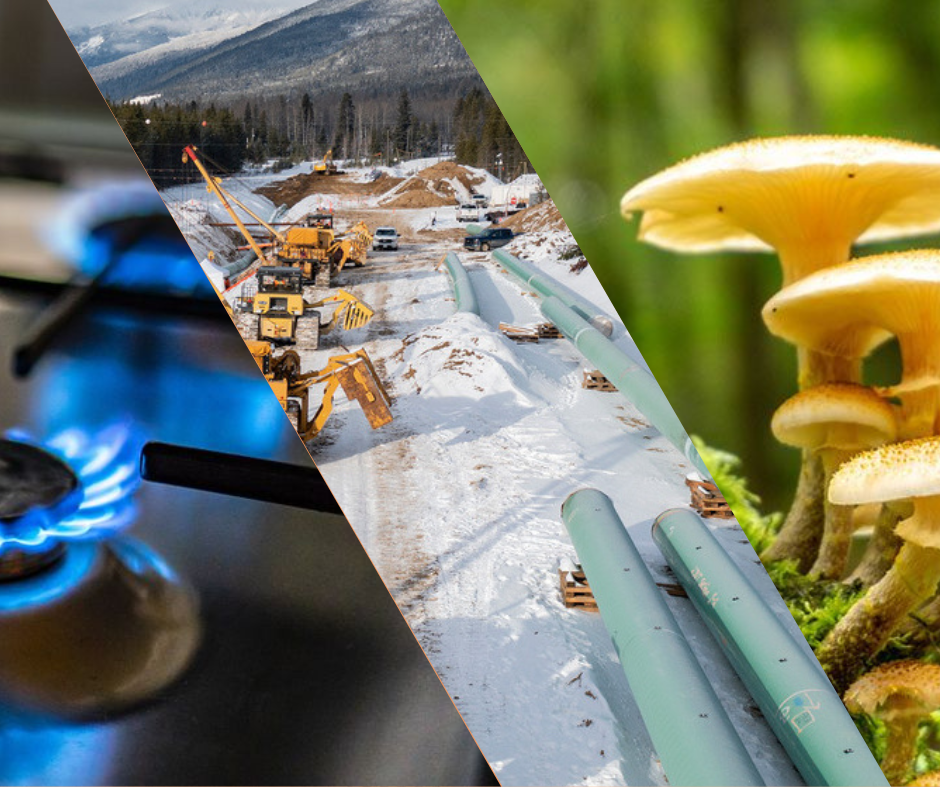So there’s this new study out saying the cost of building the “Canadian Northern Corridor,” which seems to be our maple-flavoured equivalent of China’s “Belt and Road Initiative”, will have skyrocketed due to climate change. Not that the cost of all major infrastructure programs in this country doesn’t seem to skyrocket regardless of the weather. But this one’s on fire: “The findings of our analysis show that mean temperatures within the CNC area could increase by 10.9ºC, and precipitation by 45 per cent by 2100…. Adding a climatic layer to investment costs within CNC chokepoints can increase infrastructure costs by more than 101 per cent.” Oh come on. An 11°C increase? What happened to 2 and 4? Not scary enough? Plus they made the whole thing up: “the lack of data for certain areas of the CNC limited cost function development that aimed to foresee costs at a finer scale. Furthermore, we were unable to add costs related to delays in transportation, freight and other indirect delay costs associated with possible infrastructure chokepoints due to a high uncertainty in the available cost values and issues with the reliability of data in uninhibited/remote regions of northern Canada.” And the bit where we have no idea what the weather’s going to do or even what it is doing. But as soon as you say “climate change”, abracadabra, you know all and see all.
They cite the IPCC that “Northern Canada is one of the world’s regions most affected by climate change (CC) (IPCC 2021).” Just like anywhere a given journalist or analyst lives, as we’ve noted before. And then they go into full guess mode:
“Climate change-related warming in the North has the strength to change air masses locally, regionally and continentally, affecting several climatic variables (i.e., liquid and solid precipitation patterns and extremes, humidity, maximum and minimum temperature means and extremes, surface winds, jet stream’s location and strength and so on), producing negative cascading effects to ecosystems and the human communities that depend on them. More extreme events in temperature and precipitation hasten physical processes such as the thaw of permafrost, increase the severity and intensity of drought, which may fuel more intense wildfires, and can shift extreme episodes of freezing rain to more northern latitudes and increase storm strength. Such events can increase the risk of infrastructures’ degradation…”
You get the idea? It “has the strength”, “may”, and then does the “can… can”. But of course, back in Kansas, infrastructure costs are generally lower in places where winter is less severe. Indeed, in addition to blurting out that Churchill, Manitoba would be a better port if it weren’t frozen in for so much of the year, the paper says:
“Projected future climate change could pose serious challenges to the CNC concept (Pearce et al. 2021). Building, operating and maintaining infrastructure in northern Canada is already inherently challenging due to remoteness and climate.”
Uh, climate? Why is it challenging due to the Arctic climate if warming makes infrastructure harder to maintain? Are you daft? Or just making it all up? Including “the retreat of world glaciers is unprecedented in the last 2,000 years.”
Yup. Making it up. The whole thing is also pure invention in that the map on p. 4 shows a vast red northern-nation-sea-to-sea-to-sea “Notional Corridor” then a feeble blue “Existing corridor” that for some bizarre reason is almost entirely in the warm southern inhabited part of Canada. And these days we can’t even build a pipeline let alone a vast hypermodern Arctic environmentally friendly network of corridors to nowhere.
In the end they throw in the towel:
“This study has several limitations, including uncertainty in the climate projections, lack of available information on replacement costs of infrastructure at a municipality or district level, the vastness of the area analyzed, the lack of infrastructure currently built in these areas (for value comparison) and information or cost values on the delay, or how local populations would face transportation delays due to chokepoints in remote locations. Other extra costs that could not be computed include lack of available information on delay costs related to rescue and repair of equipment and costs associated with assistance crews having to travel long distances to provide support in the CNC regions. Furthermore, we had difficulties finding specific values in the life cycle of infrastructure types related to the energy sector, including transmission lines (poles).”
Still, science says, right? Our data are fuzzy or missing, our assumptions mere guesses, and our output accurate to several decimal places.



We can’t keep a railroad to Churchill maintained…
Today, green theocracy has replaced economic trade-offs. At Trans Mountain worksites, all frogs, moss and anything else deemed invaluable has to be carefully transplanted and I can guess that if it costs an extra million or two to eliminate risk to a fish or two in every trickle crossing, it's spent. Biologists and environmental monitors likely exceed equipment operators. Any mega projects that could be done with reasonable benefit cost trade-offs are now part of history. Canada should be renamed, "Arrested Development".